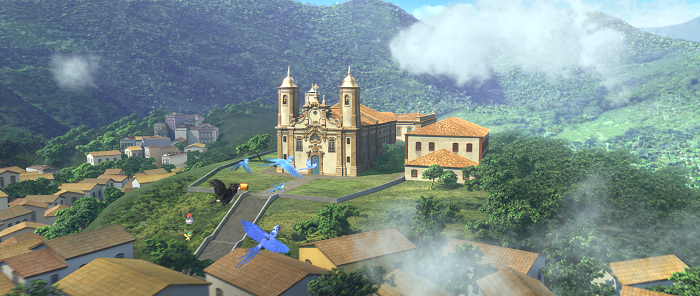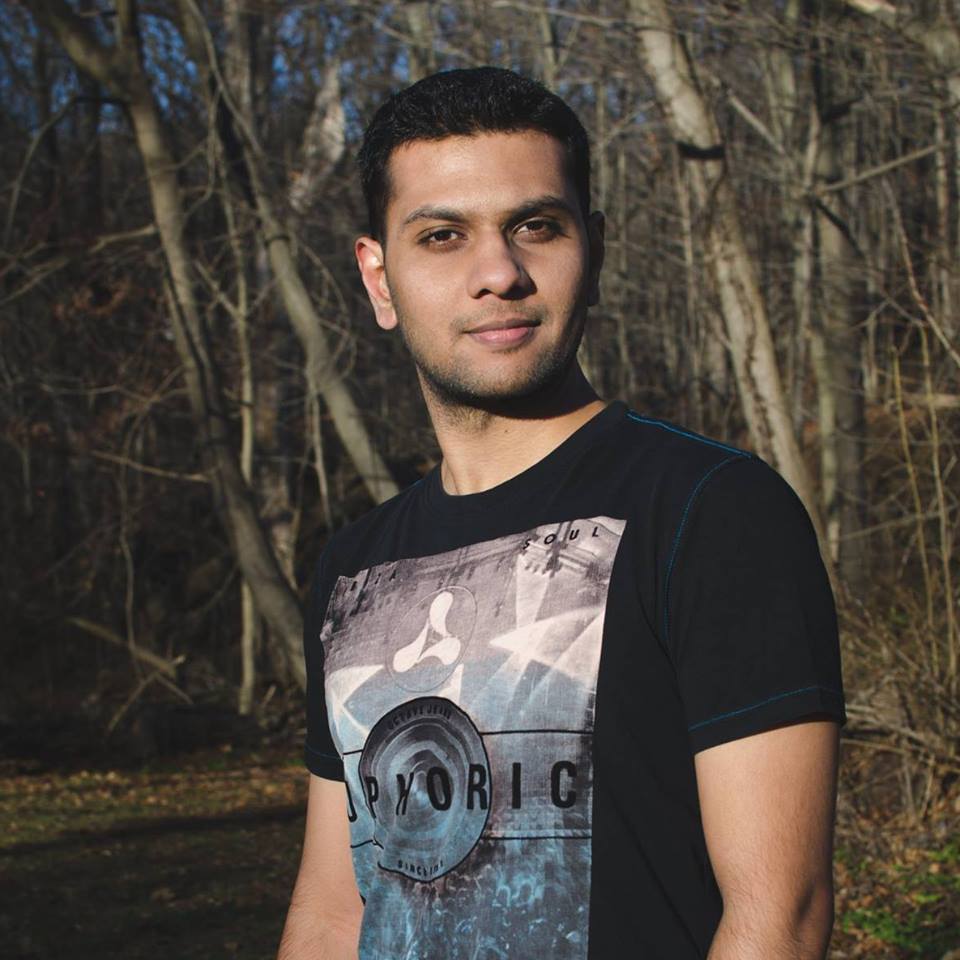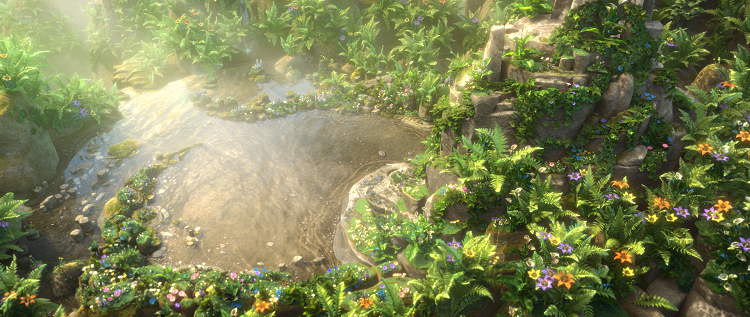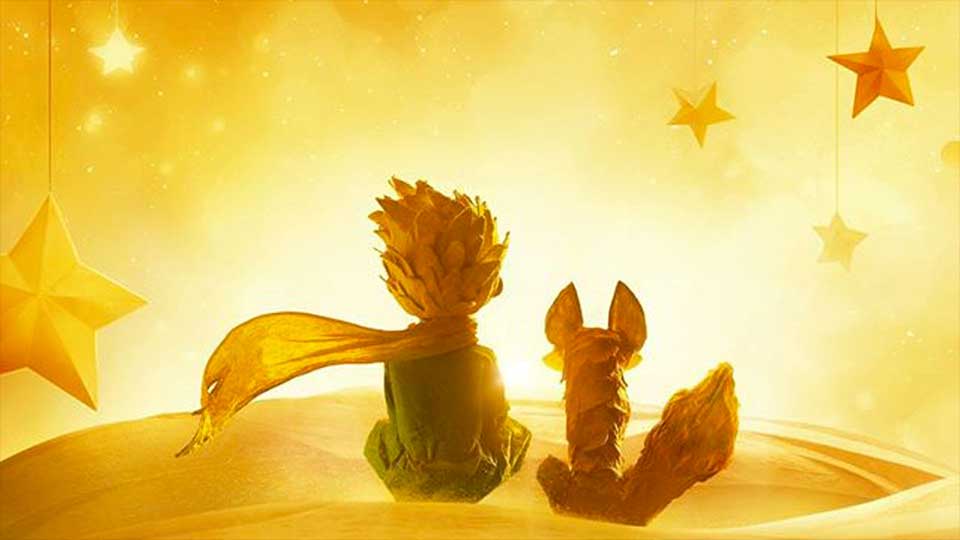
Rio 2 Photo Credit: Blue Sky Studios
What the heck is a Technical Director in Animation? We chatted with one to find out! Prashanth Pandurangaiah is the Technical Director—or TD for short—for Blue Sky Studios and has worked on awesome films like Rio 2, Ice Age: Collision Course, and The Peanuts Movie! Find out what inspires him and learn more about his day-to-day, bridging the gap between artists and programmers.
Animation Mentor: First of all, what does a technical director in animation do?
Prashanth Pandurangaiah: A Technical Director (TD) in animation essentially bridges the gap between artists and programmers. While programmers undertake large software projects for the entire studio, TDs either develop features and add-ons to the software or develop custom tools that improve the artists’ workflow specific to the department. Knowing what the department does helps you to understand the way different tools are used, and thus a TD might also work on sequences or shots in a movie. However, this definition is loosely-based and pretty much depends on the studio and line of work.

Prashanth Pandurangaiah Photo Credit: Blue Sky Studios
AM: Tell us a little bit about your career path and your journey to becoming a TD at Blue Sky.
PP: For as far back as I can remember, I’ve loved watching cartoons and animated movies. I often wondered how they were created and how these incredibly talented artists behind the scenes created all this wonderful art felt knowing they are the reason behind the smiles and laughs of kids and adults alike, all around the world. It made me happy when I imagined myself as one of the artists responsible for the smiles, and thus began my journey.
Of all the things I did as a kid, the only thing I remember vividly is watching cartoons. I’d rush home after school, turn the TV on, and go straight to Cartoon Network.
I studied Computer Science and Engineering for my undergrad degree and one of the courses I took was Computer Graphics (CG), which made me really feel that I could do this. Most animation was now being done on the computer and here I was studying how to develop software. I then did my Masters at Carnegie Mellon University’s Entertainment Technology Center (ETC), where I learned a lot from some of the elite members and veterans of the industry. After the ETC I joined Blue Sky Studios where I’ve been a TD for the past 5 years working on blockbusters such as Rio 2, Ice Age: Collision Course, and The Peanuts Movie.

Rio 2 Photo Credit: Blue Sky Studios
AM: What made you fall in love with animation?
PP: Of all the things I did as a kid, the only thing I remember vividly is watching cartoons. I’d rush home after school, turn the TV on and go straight to Cartoon Network. I would be lost in these magical worlds, so enchanted by them that I’d become completely oblivious to the real world. These fantastical worlds spun by brilliant artists were way better than anything in real life (school in particular). Whether it was a little mouse being chased around by a cat, or the adventures of a duck dressed in a sailor outfit, or a mouse larger than a dog, who incidentally also had a pet dog, I could never get enough of it.
Out off all the reasons I loved cartoons, most important was that the good guys never gave up and that everything fell into place to ensure that they ultimately won, with evil always destroyed in the end.
AM: What’s your favorite movie you’ve worked on (or the toughest)? What did you learn from the challenge?
PP: My favorite, and definitely the toughest, movie that I’ve worked on is Epic (2013), which incidentally also was my first project at Blue Sky Studios and the first animated movie I had ever worked on. I was hired right during crunch time, so the experience was incredibly intense and at times very intimidating. I mean, these people were literally my idols! I aspired to be one of them some day, so I couldn’t believe I was now working among them on a full-length animated feature. However, everybody was extremely helpful and supportive. My supervisor eased me into the pipeline and my teammates were very helpful throughout. Because of this, I was able to learn a lot in a short time.

Epic Photo Credit: Blue Sky Studios
One of the important things I learned was to stay focused and ask questions until I thoroughly understood how things work and what I was supposed to do. Everyone being on the same page is essential at all times, even more so during crunch time.
AM: Can you take us through a typical day at Blue Sky? What’s your favorite part of being a TD?
PP: The best part about working in animation is that there’s usually not much that’s typical. The pipeline is pretty stable for the most part, but there are always new challenges while attempting to push boundaries and new tools to be developed to improve the way we work.
Don’t be disheartened and don’t give up if things don’t seem to work out initially. I know it sounds cliche, but it’s true.
Technological advancements happen today at a very fast rate, and Blue Sky Studios is among the pioneers in the industry (we even received the Academy Award for Scientific and Technical Achievement in 2017). So there’s always something new to learn and possibly incorporate into our workflow or identify improvements to work more efficiently.
In this regard, some of the automation tools that I have developed are used across departments, have been crucial in detecting bottlenecks and thus fixing them much faster than doing this manually.
One of the best things about the job is to witness every department coming together to get things done, as our end goal is to do our best to give the audience a fun and entertaining movie experience.
Blue Sky Studios’ Ferdinand is coming December 2017!
AM: What kinds of other team members do you work with on a day-to-day basis and what does that collaboration look like?
PP: The Assembly Department, of which I’m a part, works very closely with the Art Director, Design, and Camera & Staging. We often also work with many other departments in the pipeline. Creatively, we are primarily responsible for set dressing. However, as we enter early on in the pipeline, we have quite a few important tasks, like ensuring all the digital assets that need to be there, exist. For that, we collaborate with Modeling.
If any of the set elements need rigs so they can get animated, we communicate with Rigging and collaborate with Animation on creation of cycles for them. We’ve used this technology extensively in some of our movies, to reduce Animation’s workload if it doesn’t fit as neatly in their pipeline.
Using our proprietary tech, we’ve also collaborated with Effects, and also the Fur dept, on implementing solutions that are more cost- and time-efficient. We create a sandbox that we use to test our sets and run a first pass of set optimization. This sandbox is also used by Materials to evaluate their work on all the assets. We work with Stereo to ensure our sets are stereo compliant. Finally, we work with Lighting by providing them with various optimization solutions to light and render the sets efficiently, from a memory standpoint as well as render and pre-processing times.
Knowledge of programming helps a lot. A significant part of the TD’s job is to develop tools to improve the workflow of the artists.
Basically, I have the opportunity to work with most other departments and that’s one of the things I find interesting. It helps keep the experience different, and I constantly learn something new from all of them. It’s fascinating to see how other departments work, how we’re all integrated, and finally how we all come together as one to deliver the best cinematic experience as we can.
AM: You’re a member of the International Animated Film Association (ASIFA-Hollywood), what does that mean and what kinds of cool stuff do you get to do?
PP: ASIFA-Hollywood is a society founded by professionals in the animation and VFX industries to recognize achievements of excellence, celebrate industry pioneers, and provide a platform to educate and connect students with professionals.

Being a member of the ASIFA-Hollywood means voting on the Annie Awards!
Qualified people are offered professional memberships, which allow them to vote for the Annie Awards every year. The Annie Awards were first awarded in 1972 and have since become the animation industry’s highest honor. Today, the Annie Awards have a variety of categories covering every branch of animation and VFX. As a pro-member, I receive screeners to watch all the animated films of the year, in addition to having access to the other nominated works before voting. Pro-members also receive member-exclusive invitations to screenings of animated movies, sometimes before they hit the theaters.
AM: Tell us a little more about voting on the Annie Awards. Do you vote on all categories? What kinds of criteria do you use when making your tough decisions? How much popcorn do you eat while you’re watching all the animated projects?
PP: As a professional member, I’m allowed to vote on all categories. It’s one of the toughest challenges because of the incredible work that’s submitted each year. I’m most impressed with the submissions by the students and the amazing work they are doing, and there’s always something new to learn from them.
As for deciding what gets my vote I look at the overall picture. While I enjoy the visual spectacle, I personally appreciate good storytelling more.
The best part about working in animation is that there’s usually not much that’s typical.
I’ve also found that I tend to like submissions that have achieved some technological advancement. If the quality and realism of the effects impress me and the storytelling is strong, then the film gets my vote. As simple as it sounds, every nomination has something amazing to offer, and it’s very difficult to decide. Thus I end up eating way too much popcorn during voting season, so I’m thankful I only have to go through this once a year.
The Ice Age: Collision Course trailer.
AM: What advice would you give to a student interested in becoming a technical director?
PP: Knowledge of programming helps a lot. A significant part of the TD’s job is to develop tools to improve the workflow of the artists. This means that knowing how the artists use the software is essential as well. If you’re coming from a programming background, understand that artists may not be technically versatile and what’s intuitive to you may not be the same for them.
If you’re coming from an art background, it’s imperative to learn good coding practices so you don’t have to reinvent the wheel. There are a plethora of tutorials available online including here at Animation Mentor, so check them out, go through them and practice.
Lastly, don’t be disheartened and don’t give up if things don’t seem to work out initially. I know it sounds cliche, but it’s true.
Want to learn from professional animators?
Start your animation journey by learning with professional animators from a variety of studios and career paths! Get more information about Animation Mentor’s Character Animation Program.


